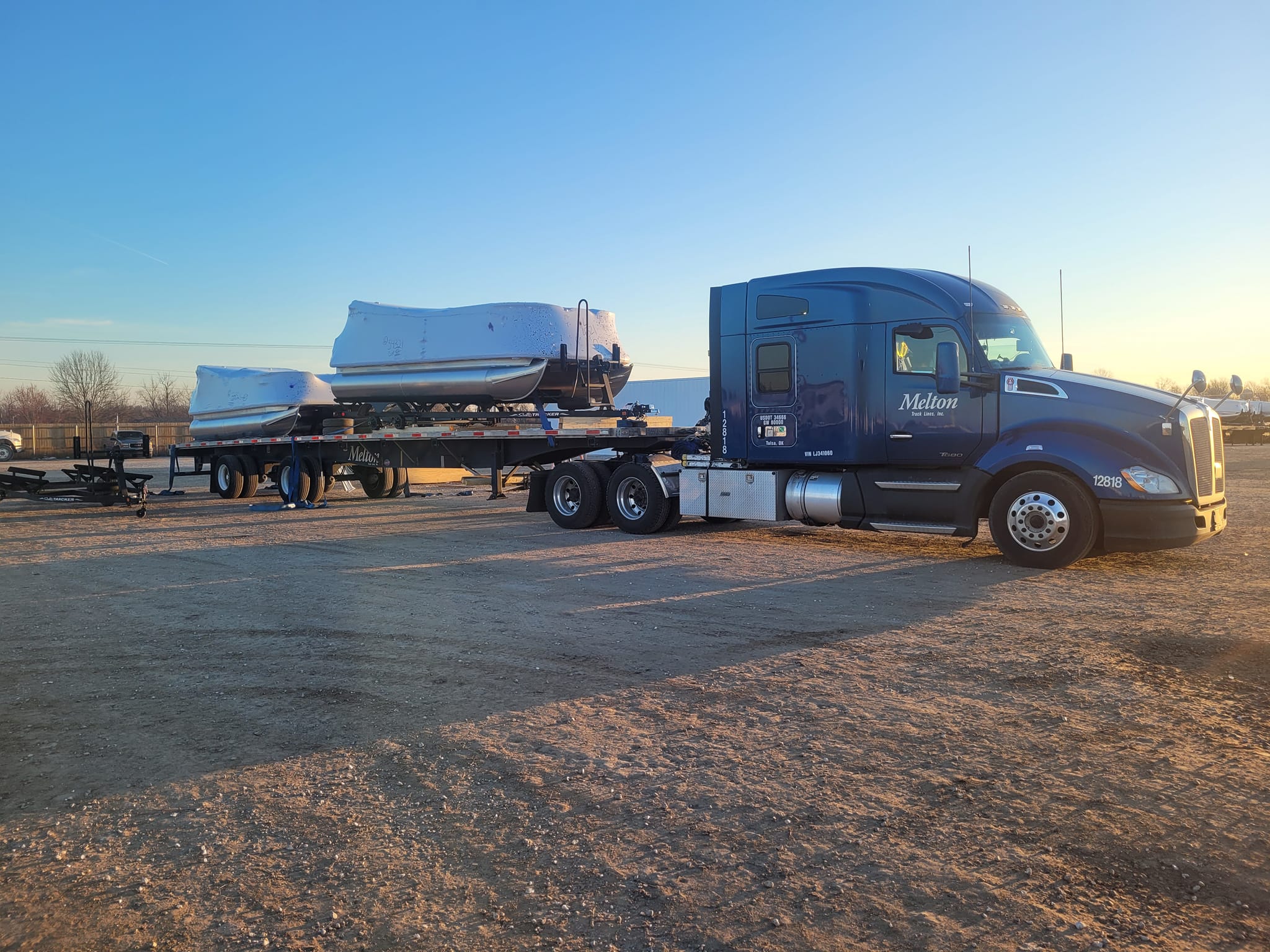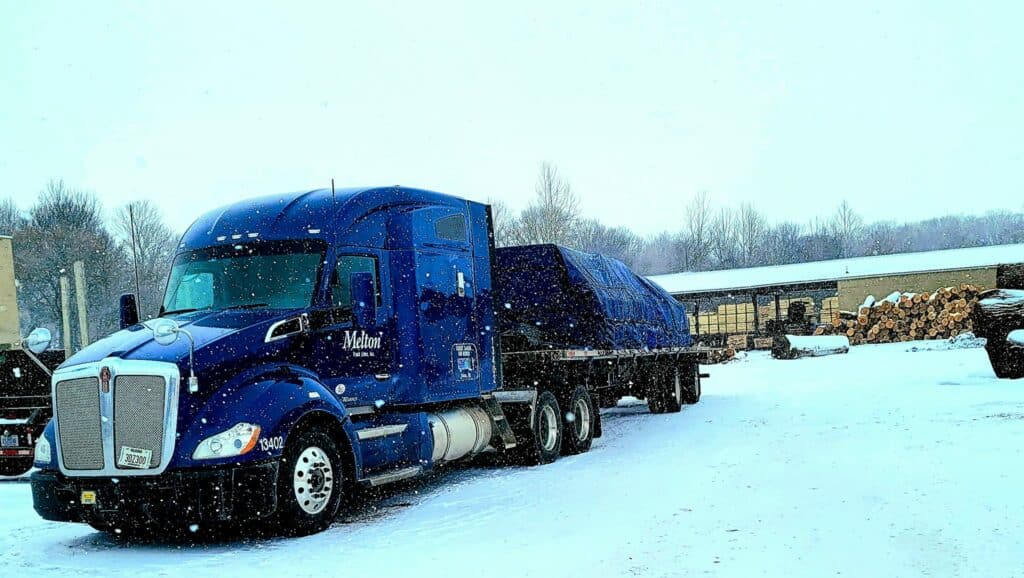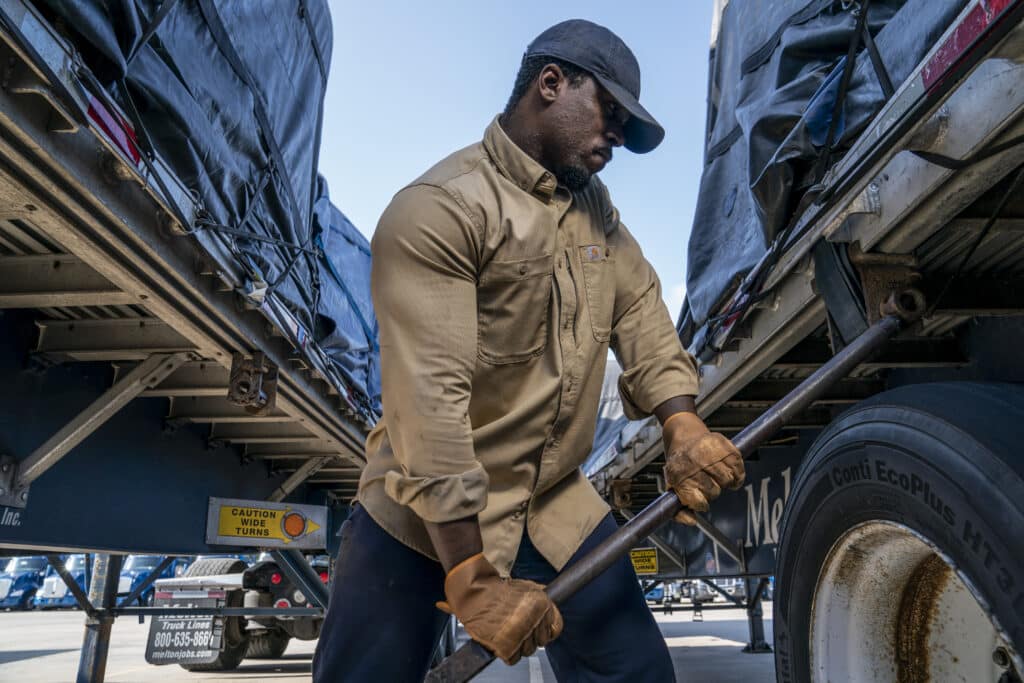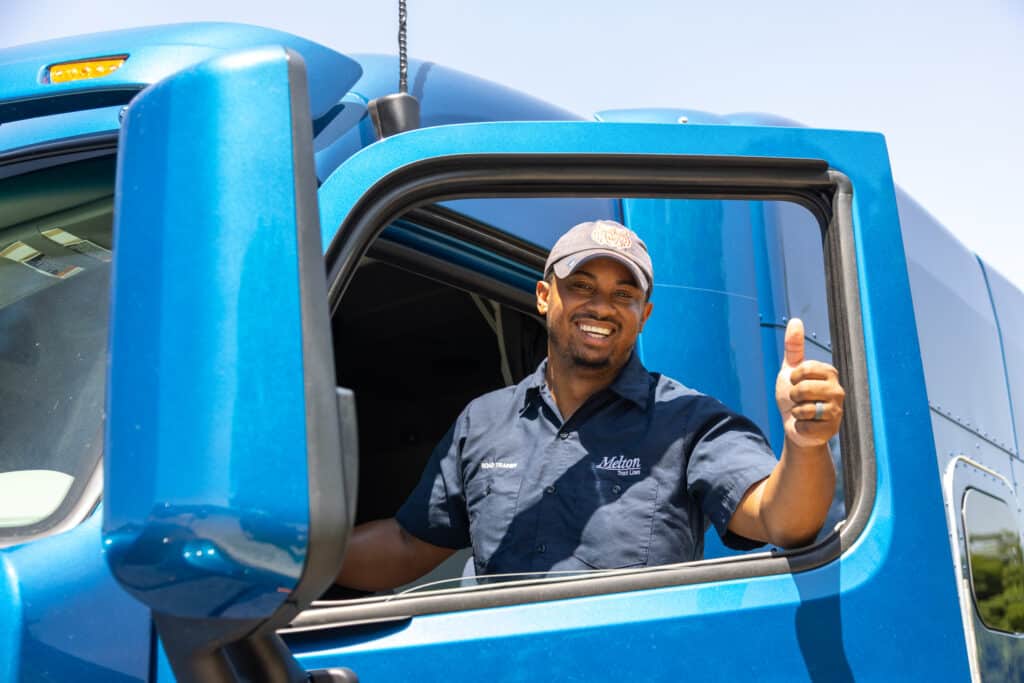
Fears of Flatbed Hauling
Tarping & Securing Your Own Loads
Flatbed drivers haul a wide variety of commodities that can’t fit or don’t make sense to place in an enclosed trailer, such as: steel, lumber, building materials, and large machinery to name a few. It’s the driver’s responsibility to ensure every load is consistently loaded and secured in accordance with DOT safety standards. Proper load securement is critical because it not only protects the freight, but also other motorists on the road.
Tarping is arguably the most difficult part of a flatbedder’s job. Not all loads require tarps, but the ones that do, need to be applied correctly and secured tightly to ensure your load is protected from road grime, moisture, and harsh environmental conditions. Flatbed loads get delivered to many different types of locations whether that be a shipping yard, city, job site. Which means, drivers may have to secure and tarp in places that may be more challenging than others.
There are many trucking companies out there that offer flatbed training for those who lack flatbed experience. Melton’s customized pre-hire evaluation program covers safety standards, load securement, and tarping best practices, to ensure all drivers are properly trained and equipped for a safe and prosperous flatbed driving career.
Variety of Tools & Equipment
Flatbed drivers have a variety of tools and equipment they must use for securement that van drivers typically don’t have to work with. Depending on the freight— You’ll be using straps, chains, binders, levelers, dunnage, bungies, v-boards, and tarps. Most flatbed companies will teach you what tools and equipment are required and how to use them properly. During Melton’s 8-day pre-employment evaluation, we’ll provide you with state-of-the-art, hands-on training and the resources necessary to become a successful flatbed driver.

Weather
Despite many weather conditions, flatbed drivers are still getting out of their truck to tarp and secure their loads. When considering flatbed, it’s important to remember that you are going to be outside whether it’s 100 degrees and sunny, or -20 degrees and snowing. However, if you are properly equipped for the weather conditions, then you should have less trouble getting the job done. To prepare, make sure you have the proper footwear, socks, good gloves, and work wear/PPE.
At Melton, we advise our flatbed drivers to take the necessary precautions when securing loads in all types of weather. Staying hydrated, taking periodic breaks to cool down, wearing sunscreen, and purchasing a cooling towel are a few ways to keep cool in the summer heat. Wearing insulated overalls, extra wool socks, thermal underwear, winter working jacket and dry gloves are key when trying to stay warm in the wintertime.
Dangerous
Flatbed trucking can be considerably more dangerous than dry van, reefer, and other modes of transportation since the cargo is not secured in an enclosed trailer. If the load is not properly secured it can shift during transport making it difficult to control the truck itself, which increases the risk for a potential accident.
In addition to following all securement and driving protocols, drivers must stay alert and watch out for careless drivers around them. Most 53’ flatbed trailers can haul up to 48,000 lbs. or even up to 54,000 lbs. if it’s an over dimensional load – That’s a lot of weight shifting forward when forced to slam on your breaks. Then of course, there is always the risk of potentially falling off the trailer and injuring yourself during the securement process, if you are not careful.

Physically Demanding
Drivers making the switch to flatbed from dry van and other types of hauling may have a hard time adjusting to the increased physical requirement of flatbed. During load securement, drivers are climbing up and down the trailer, throwing straps and chains, securing them, tying them down and cranking binders. If the load needs to be tarped, drivers need to unroll their tarps, tarp the load, and make sure they are tightly secured.
Flatbed freight comes in all different shapes and sizes so, not all loads will be tarped and secured the same. Sometimes drivers need to get creative when tarping oddly shaped loads. Once the load arrives to its destination, the driver must undue all tarps and straps, roll up their tarps, and store away the equipment properly. The jobs not done yet! After all that hard work, the driver must get on the road and drive to their next destination. Yes, flatbed can be physically demanding, but it’s a great way to stay fit while over the road!
More Regulations
There is a great number of regulations to follow when hauling a flatbed trailer. It takes strong attention to detail to ensure flatbed loads are transported safely and legally, but not every truck driver is up to the job. Of course, all loads must be loaded and secured in accordance with DOT regulations, but there’s also strict regulations on trailer measurements, the way you store and secure your tools and equipment, and more. To learn more about cargo securement rules and regulations, check out this page from FMCSA’s website: https://www.fmcsa.dot.gov/regulations/cargo-securement/cargo-securement-rules

Conclusion
Is flatbed trucking hard? The answer is yes, it can be challenging, but also very rewarding! The skills and knowledge acquired through training are in constant demand in this industry. In addition, flatbed jobs often pay at a higher rate and keep you in strong physical condition. There are risks that come with every job, but if you continue to be safe, aware, and cautious, you will see that flatbed isn’t as fearsome as it looks. Check out our flatbed driving jobs page to learn more about Melton’s flatbed truck driving jobs.
Find out more about flatbed trucking in the following posts:
